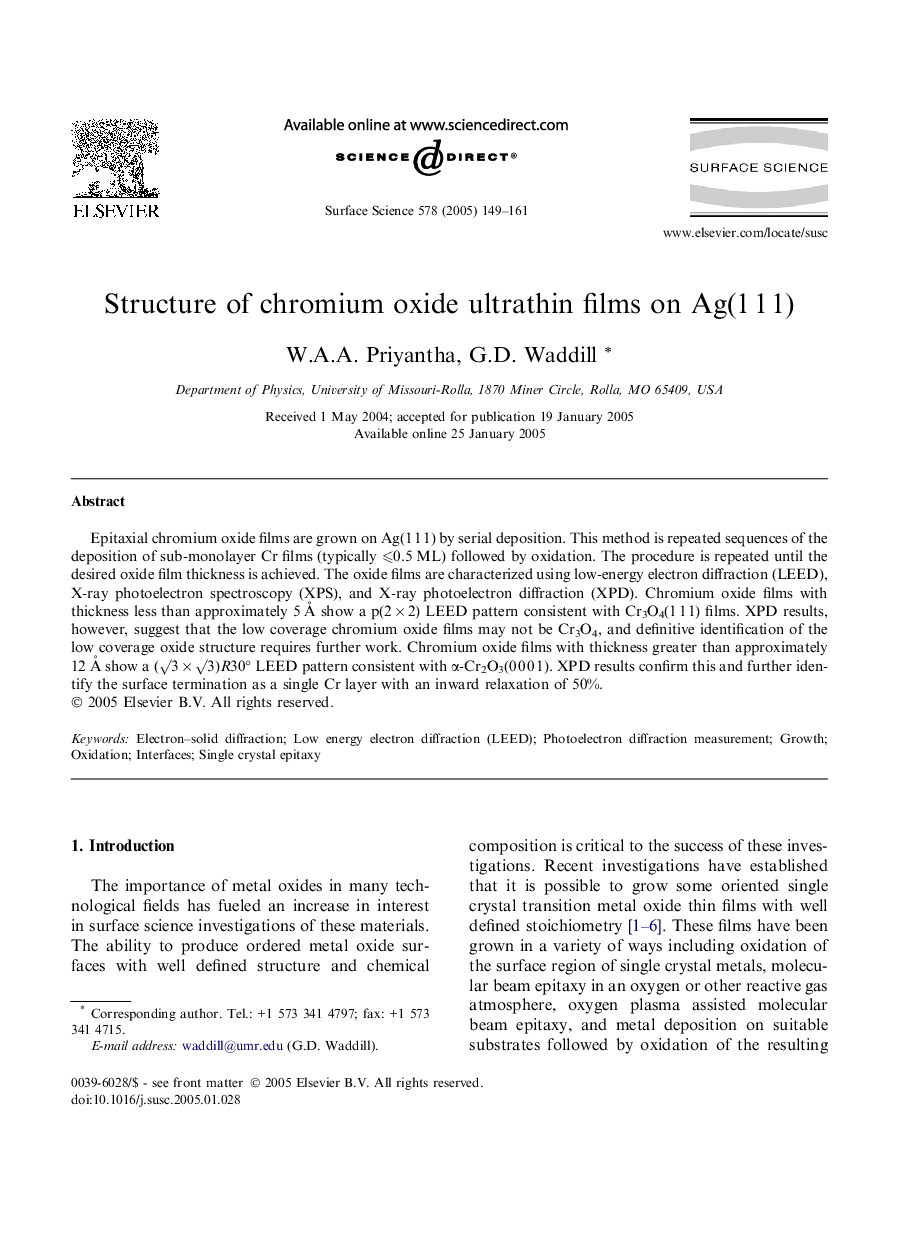| Article ID | Journal | Published Year | Pages | File Type |
|---|---|---|---|---|
| 9595701 | Surface Science | 2005 | 13 Pages |
Abstract
Epitaxial chromium oxide films are grown on Ag(1 1 1) by serial deposition. This method is repeated sequences of the deposition of sub-monolayer Cr films (typically ⩽0.5 ML) followed by oxidation. The procedure is repeated until the desired oxide film thickness is achieved. The oxide films are characterized using low-energy electron diffraction (LEED), X-ray photoelectron spectroscopy (XPS), and X-ray photoelectron diffraction (XPD). Chromium oxide films with thickness less than approximately 5 Ã
show a p(2Â ÃÂ 2) LEED pattern consistent with Cr3O4(1Â 1Â 1) films. XPD results, however, suggest that the low coverage chromium oxide films may not be Cr3O4, and definitive identification of the low coverage oxide structure requires further work. Chromium oxide films with thickness greater than approximately 12Â Ã
show a (â3 Ã â3)R30° LEED pattern consistent with α-Cr2O3(0 0 0 1). XPD results confirm this and further identify the surface termination as a single Cr layer with an inward relaxation of 50%.
Keywords
Related Topics
Physical Sciences and Engineering
Chemistry
Physical and Theoretical Chemistry
Authors
W.A.A. Priyantha, G.D. Waddill,
